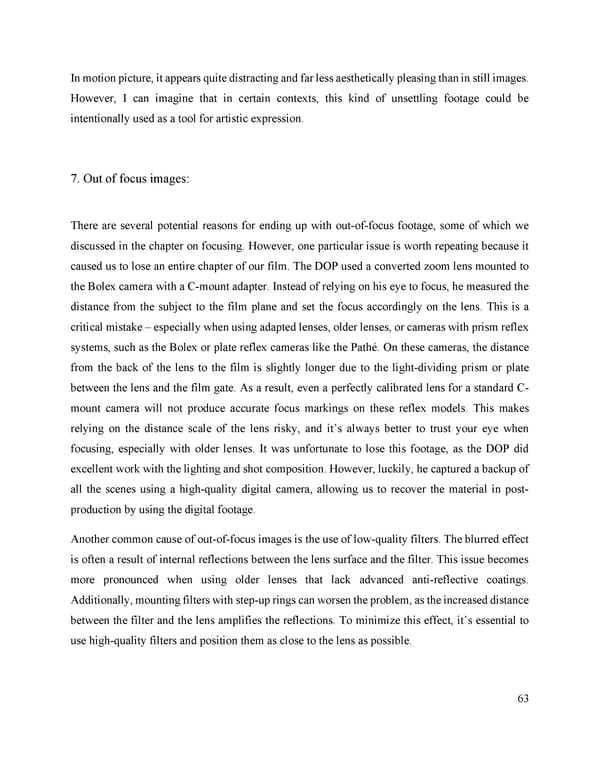In motion picture, it appears quite distracting and far less aesthetically pleasing than in still images. However, I can imagine that in certain contexts, this kind of unsettling footage could be intentionally used as a tool for artistic expression. 7. Out of focus images: There are several potential reasons for ending up with out-of-focus footage, some of which we discussed in the chapter on focusing. However, one particular issue is worth repeating because it caused us to lose an entire chapter of our film. The DOP used a converted zoom lens mounted to the Bolex camera with a C-mount adapter. Instead of relying on his eye to focus, he measured the distance from the subject to the film plane and set the focus accordingly on the lens. This is a critical mistake – especially when using adapted lenses, older lenses, or cameras with prism reflex systems, such as the Bolex or plate reflex cameras like the Pathé. On these cameras, the distance from the back of the lens to the film is slightly longer due to the light-dividing prism or plate between the lens and the film gate. As a result, even a perfectly calibrated lens for a standard C- mount camera will not produce accurate focus markings on these reflex models. This makes relying on the distance scale of the lens risky, and it’s always better to trust your eye when focusing, especially with older lenses. It was unfortunate to lose this footage, as the DOP did excellent work with the lighting and shot composition. However, luckily, he captured a backup of all the scenes using a high-quality digital camera, allowing us to recover the material in post- production by using the digital footage. Another common cause of out-of-focus images is the use of low-quality filters. The blurred effect is often a result of internal reflections between the lens surface and the filter. This issue becomes more pronounced when using older lenses that lack advanced anti-reflective coatings. Additionally, mounting filters with step-up rings can worsen the problem, as the increased distance between the filter and the lens amplifies the reflections. To minimize this effect, it’s essential to use high-quality filters and position them as close to the lens as possible. 63
 Lost Analogue: Exploring Film, Music, and Interdisciplinary Methods in Education Page 63 Page 65
Lost Analogue: Exploring Film, Music, and Interdisciplinary Methods in Education Page 63 Page 65